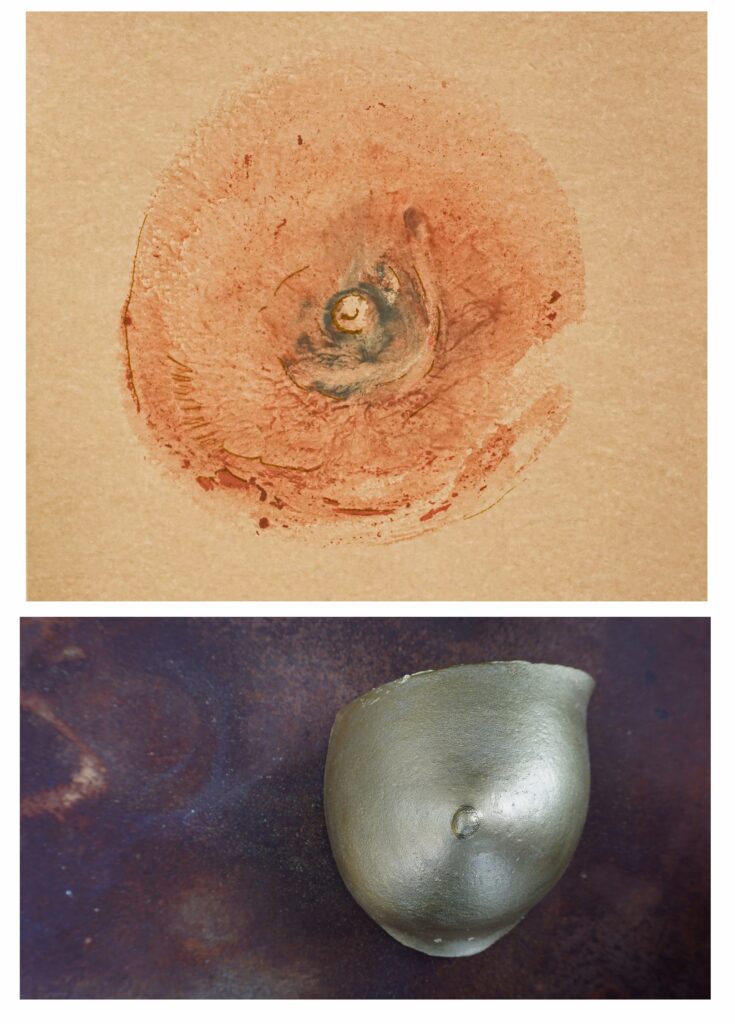Posted by Saviya Lopes
published on : June 11, 2025

The Matriarchs
published on : May 20, 2025
The Matriarchs – “The Tereza I know” (Photographic Series), 2020
The Matriarchs
They followed Matrifocality.
They were fierce.
They were outrageous, audacious and courageous.
They were committed;
Committed to the survival and wholeness
of entire people/community.
They loved music.
They loved to dance.
They loved their spirits.
They loved food.
They loved their struggle.
They loved themselves
and other women.
They loved Love.
They were the Womanists.
All this while, they carried a part of me inside their womb.
A part that keeps growing inside me now.
We were always connected
We will always be womanists.
First published in March 2020
“Birthday Suit”
published on : May 20, 2025
Tulle Fabric 2016
For long, as long as art has been around, people have been fascinated with the topic of nudity or the nude within art. Over the time, from the stone ages up to the modern times, nudity has always been present in some shape or form. But it is in how we perceive, and view the nudity that has changed the most. The Nude has gone from being a symbol of female power and fertility, something that we celebrated, to now something shameful, erotic and perverse in the same way. However, the most important thing here is the distinction between what is counted as a ‘nude’ to what is counted as ‘naked’. The significant distinction between the naked and the nude is where one is considerate to be a shameful subject and the other one is considered to be an art form.
When physical beauty is idealized/ featured in popular media through out contemporary times of histories, it in fact reduces human bodies to sexualised objects. Thus in turn creating messages across mass media that one’s body is inadequate apart from the sex appeal; connecting the concepts of beauty, body and sex. The work tries to find relationship between individual identity and its relationship to beauty; at the same time, trying to also mock the whole idea of categorizing the human body forms into objects.
“Birthday Suit” consists of garments stitched out of sheer fabric. The sheer fabric garments are a critique to the sexualization of gendered clothes, where eventually the stitched clothes do not confine themselves to a particular form or social construct. In turn accepting the bodies we have beneath them.
At times, the outside critique of our bodies happen often enough, that most people have had a moment when they realize that their body is a public property. Certain body parts are not inherently sexual, as sex is not their primary function. But somewhat ironically, hiding these body parts away gives them an air of mystery, ultimately increasing the sexual tension surrounding them. In terms of clothing, it serves as an important socializing influence and acts as a symbol of social status and identity. It plays a crucial role in the identity politics of urban societies. Clothing serves as informative as well as non-informative at times. In a way, it reflects the self- the identity, the material practice we engage with in daily life. Dressing can be an act of making the self, available to others, not only for appreciation and admiration, but also for objectification. One’s wardrobe is known to be an extension of the diverse aspects of one’s beliefs and constructs social identity. In this whole process of identity creation, there is an attempt to strike a balance between the dynamic interplay of conformity and individuality, which is identified as a core aspect of fashion. People at times are also known to self objectify themselves when they choose clothes for fashion over comfort.
The medium of sheer fabrics is one of the most sensual fabrics available in the fashion industry. It owes its popularity to the mystical aura that it generates when worn. Nude or “skin tone” was, and still is popular when making garments; when the wearer appears naked but is actually wearing a skin tone sheer garment. Also known as the illusion, it gives the impression of exposed flesh while the wearer is completely covered. The sheer fabric-clothing acts as an acceptance of the nude body we carry in the city. In turn, the wearer, being in between the state of body acceptance in the society. The question of the body being something else rather than just being right or wrong. The work attempts to bring us to terms with our own conscience.
First published in December 2021